2011 Tata Nano CX - Click above for high-res image gallery
People love the idea of super-cheap transportation. Two generations ago, Volkswagen captured the world's attention with the Beetle (known originally as "The People's Car"), but when people finally drove the rear-engined VW, they realized it was more than just a cheap car – it was remarkably fun to drive.
India's Tata Motors picked up on the people's car idea several years ago. Motorbikes and pedal bikes are the go-to transportation options for millions in India, which presented an opportunity. But with the average price of a new car in the U.S. hovering around $30,000, an inconceivable sum in the developing world, Tata would have to do something very different. The tiny Nano was the result. It's currently on sale in India starting at around $2,500. That sound you hear is over a billion people cheering because they can now envision themselves owning transportation with a roof that they don't have to pedal.
The pint-sized sedan wowed crowds at its New Delhi introduction in 2008 and Tata began exporting the Nano throughout the developing world. Speculation swirled that the company would eventually target the U.S. after the car was put on display at the 2010 Detroit Auto Show, but do we really want it here?
Text and photos by Rex Roy / Copyright ©2010 AOL
I only spent 20 minutes behind the wheel of the 2011 Tata Nano, but it was enough to answer most basic questions.
First, let's consider the 2011 Tata Nano's specifications. At just over 10 feet, it's slightly longer than a Smart ForTwo, but that doesn't make it large. The subcompact Nissan Versa is about four feet longer, and most Americans consider the Versa to be very small.
There's less than five feet separating the right door handle from the left, and within this space, Tata has squeezed four seats and a small parcel shelf behind the rear bench. Surprisingly, there is adequate room for four. The tall roof and expansive greenhouse helps promote a feeling of spaciousness even if there isn't an inch to spare. One reason the interior has the room it does is because there's no trunk or conventional engine bay. Bags travel in your lap or on the rear shelf and the back seat folds to expand cargo-carrying options. Contrary to popular belief, the Nano is not a hatchback – there's no rear opening at all, a design strategy that lowers cost and improves rigidity.
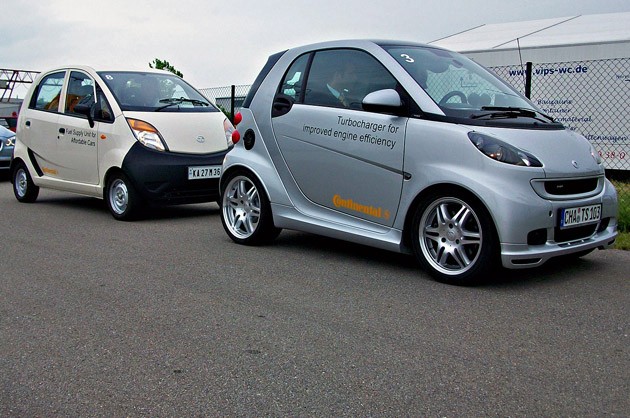
The other reason for the exemplary space utilization is that there are no traditional crush zones. All vehicles sold in North America have body structures designed to help absorb and safely dissipate the energy of a collision. This type of design requires additional space, engineering and material, none of which is possible given the Nano's $2,500 price.
Our test model was the mid-level Nano CX. It features taxi-grade, two-tone vinyl upholstery and hard plastic door panels. Painted metal surrounds the door inserts and the roof pillars are also all devoid of trim. Air conditioning and a heater are standard, an extra not found on the base model. Your kids might be amused that the windows require arm-power to crank up and down. Power door locks? Nope. They push down and pull up just like in the old days.
The vehicle we drove was an Indian-market unit, so the steering wheel was to the right of the center console, as India is a drive-on-the-left country. A small instrument cluster tops the console and features a speedometer, digital fuel gauge and warning lights. The aftermarket radio and dash-top speakers in the tester were dealer-installed accessories, as was the Bluetooth antenna for hands-free cell phone use.
Our opportunity to drive the Nano came thanks to automotive supplier Continental AG. The company produces the engine control computer for the Nano's fuel-injected gasoline engine, a 624-cc two-cylinder engine (about 38 cubic inches for you old-school types). Cranking out approximately 33 horsepower and 65 pound-feet of torque, you might own a riding lawn mower with more oomph. The engine uses a balance shaft to help quell the vibration inherent in a two-cylinder engine, and it does the job. Just.
While 33 horsepower isn't anything to brag about, the Nano only weighs 1,355 pounds, so there's not much to push around. And "push" is the operative term. The Nano's engine powers the rear wheels from its position behind the back seats and is accessed through the interior via the panel that forms the floor of the parcel shelf. The hood is held in place with practical wing nuts. Air for the engine's intake and cooling is sucked in through vents in front of the rear wheels and the exhaust pipe isn't much larger than the straw of a Super Big Gulp.
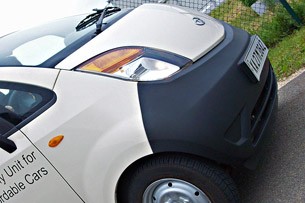
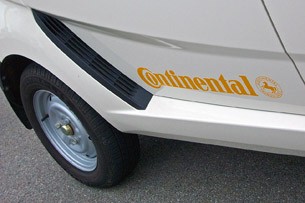
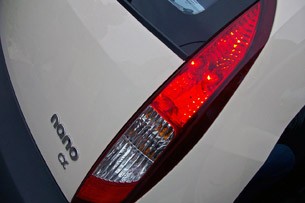
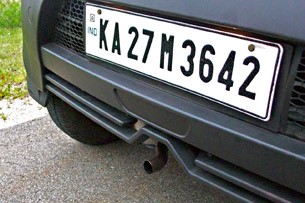
Rounding out the specs, the Nano has a four-speed manual transmission, 12-inch tires and equally tiny seven-inch drum brakes. These are power assisted on the CX, but manual on the base model. The brakes, wheels and tires are independently suspended at the very corners of the Nano to help maximize interior space.
Sliding into the right front seat of the Nano, its feathery-light door closes easily. The key fires the ignition in a familiar way and the engine starts willingly, quickly settling into a smooth idle. The clutch pedal feels as if it is connected to a few thick rubber bands, but it does its job and the Nano moves easily off the line, and the transmission makes quick work of moving up and down the gears.
Because there's no tachometer, you shift when the power falls off – tricky because there's so little power to begin with. In a race to 20 mph, you could out-accelerate a Nano on a bike, especially if the Nano is loaded with four passengers. Acceleration to 60 mph takes a long time; you might want to bring a sandwich and a cup of coffee.
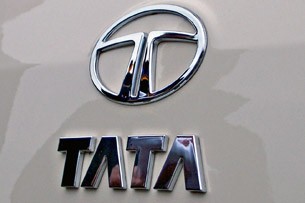
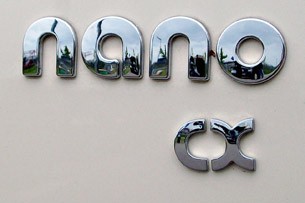
Given enough smooth, straight road, the Nano might have hit 65 mph, but driving that fast isn't the little car's forte. It's designed for congested city streets where speeds rarely top 45 mph. Even at these lower speeds, the Nano still feels floppy and sloppy. Around corners the softly-sprung suspension wallows like a rowboat in angry beach surf. Even slight road imperfections or tiny steering inputs cause the body to roll and flex with a sickening queasiness. Confidence inspiring it was not.
So those were the negatives. But, the Nano has its charms.
Compared to motorcycles, motorized tricycles and bicycles, the Nano is a real car that's actually affordable to the rapidly growing middle class in developing countries. It surrounds occupants in steel, puts a solid roof over their heads, and even provides a climate-controlled interior. And with an estimated EPA fuel economy of 52 mpg city and 62 mpg highway, the Nano is economical to operate. This car is a huge step forward in terms of transportation for a lot of people who've never had the opportunity.
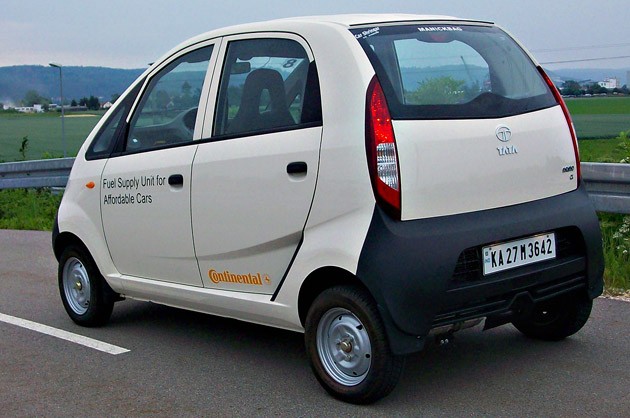
That said, the Nano is clearly not ready for U.S. shores. Americans who want transportation for $2,500 have an endless supply of used vehicles to choose from, nearly all of which would outperform the Nano while providing more safety.
Representatives from Tata Motors freely admit that to enter the U.S. market, the Nano would require crush zones, airbags, anti-lock brakes and electronic stability control, which would dramatically increase the vehicle's cost. Estimates of $8,000 have been tossed about – so much for ultra-cheap transportation in America.
However, looking ahead a few years, Tata shouldn't be counted out. It recently purchased Jaguar and Land Rover from Ford Motor Company, so it has access to top-notch automotive technology. Additionally, development of the Nano is supported by an already huge and advanced manufacturing operation. So there's the potential – and a desire – for a push into North America. And if anybody can bring the world a modern people's car, Tata can.
Text and photos by Rex Roy / Copyright ©2010 AOL
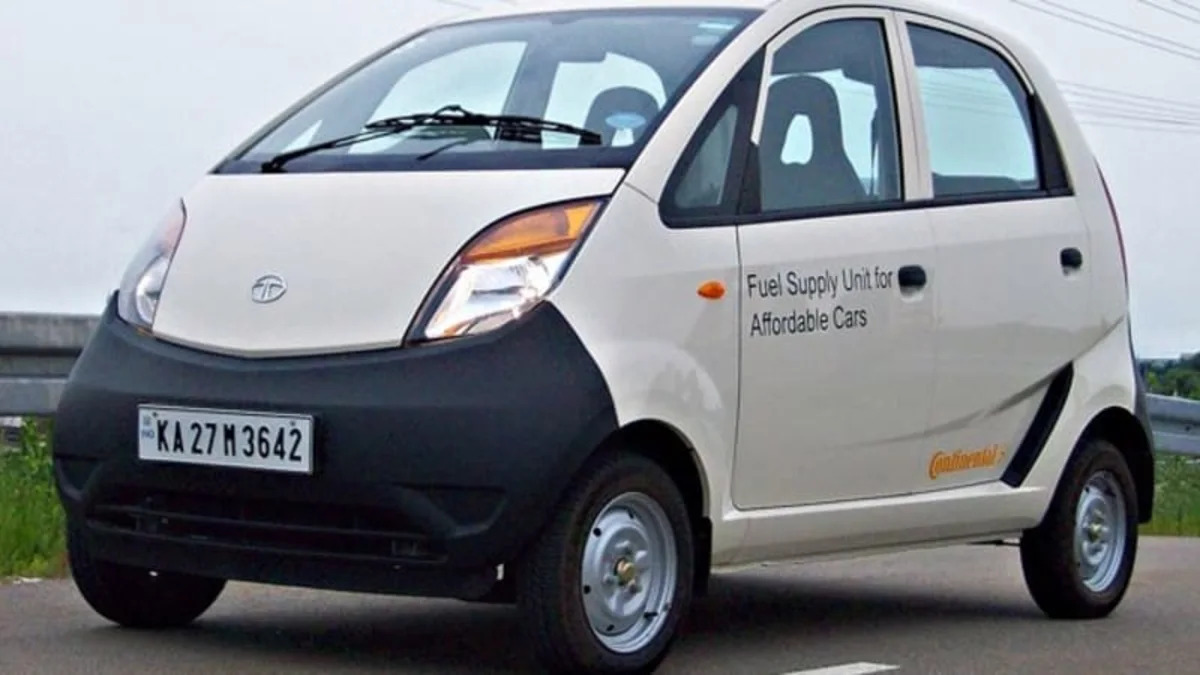
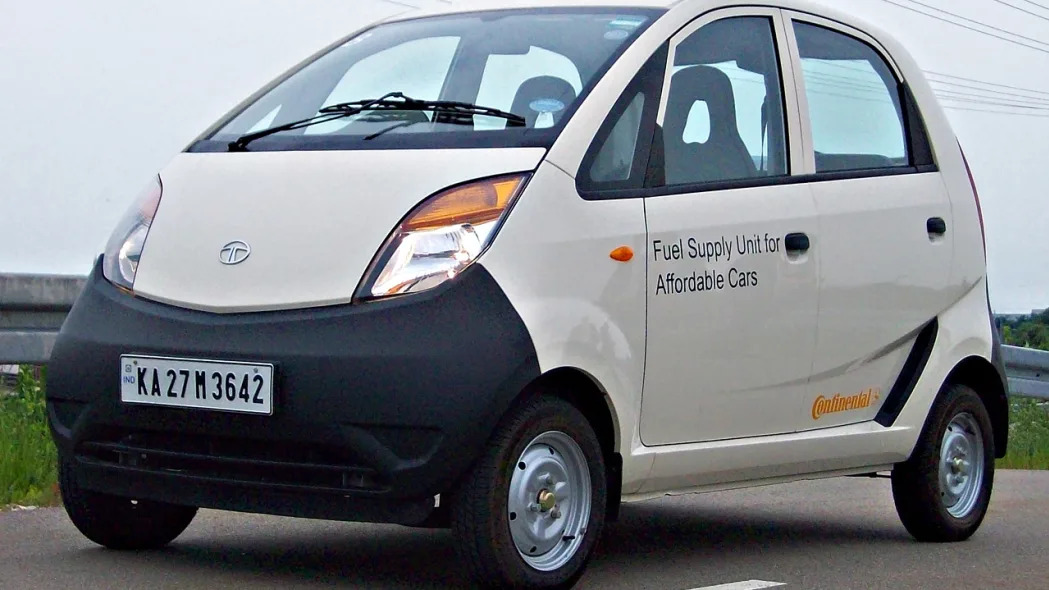
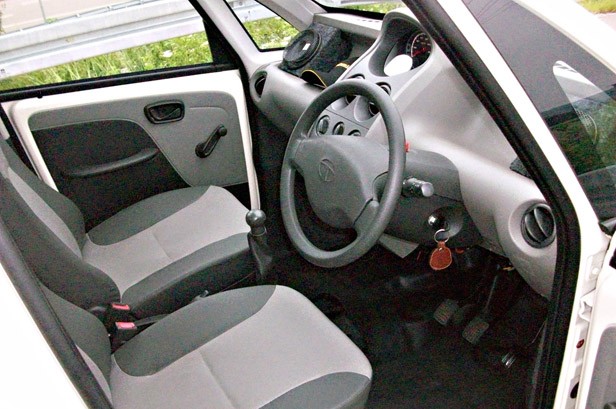
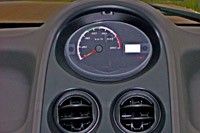
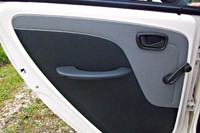
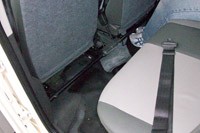

Sign in to post
Please sign in to leave a comment.
Continue